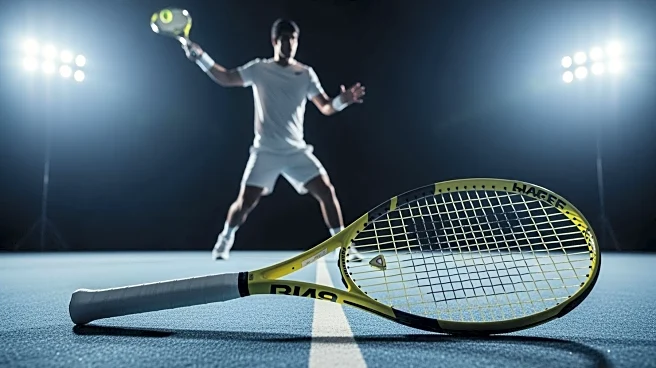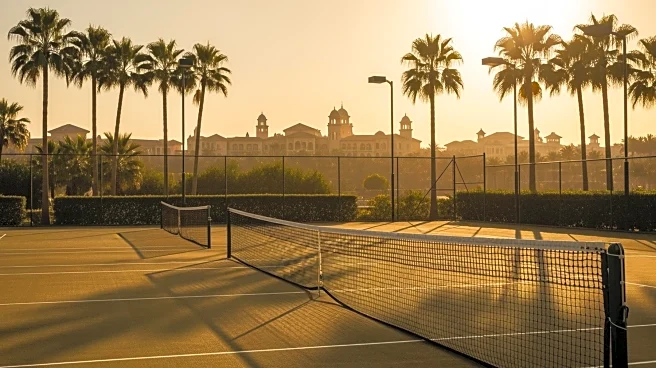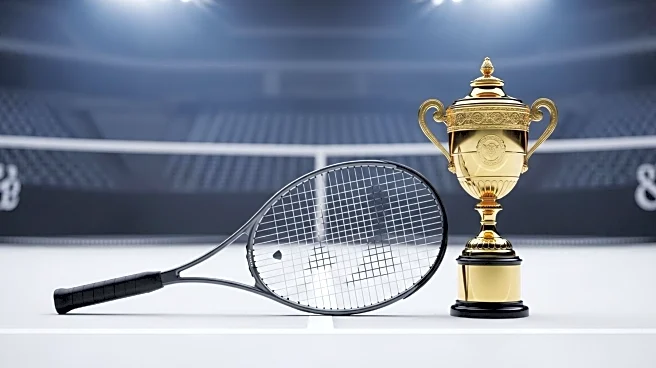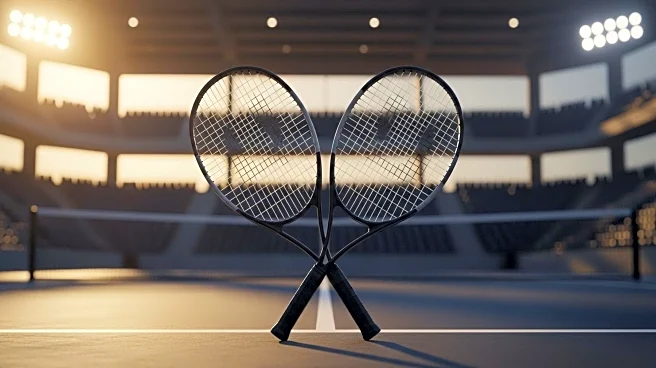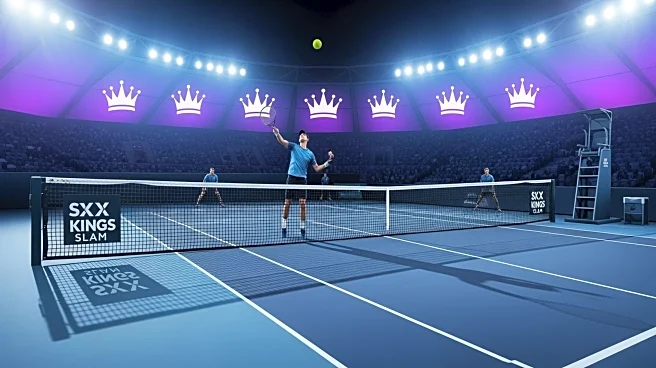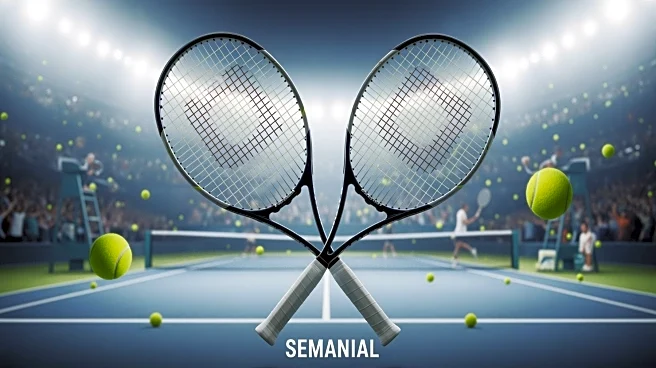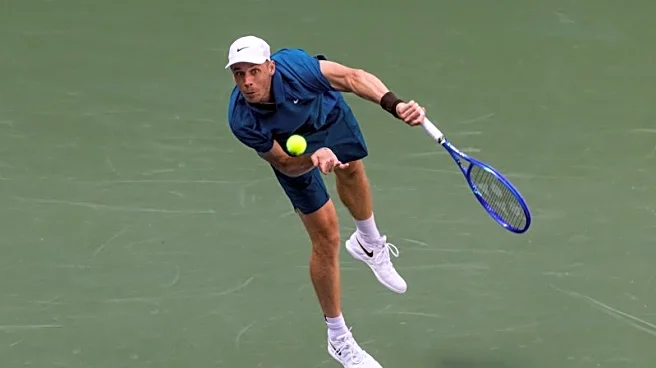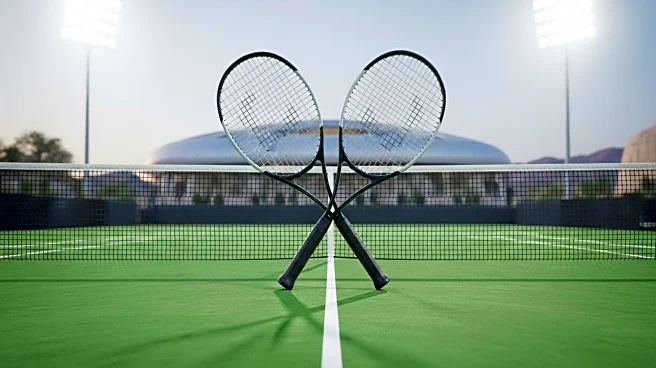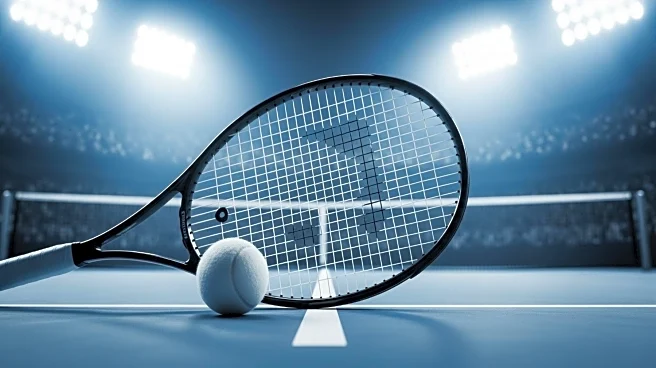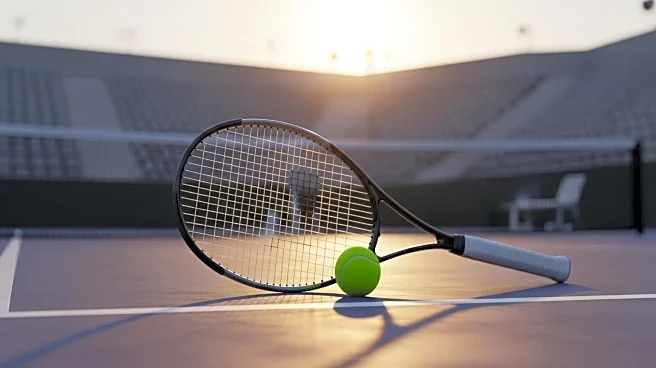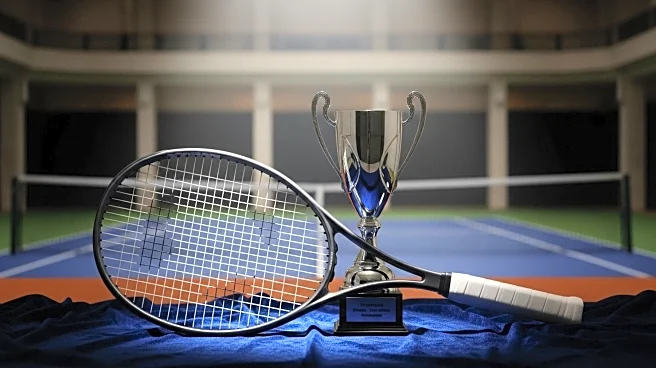What's Happening?
Carlos Alcaraz, the World No. 1 tennis player, is participating in the Six Kings Slam exhibition in Riyadh following his recovery from an ankle injury. Despite not being at full health, Alcaraz is optimistic
about his performance, noting improvements in his condition. The exhibition event, which differs in physical demands from ATP Tour tournaments, provides Alcaraz an opportunity to showcase his skills and test his recovery progress. The match against Taylor Fritz is a highlight, with Alcaraz's aggressive playing style and impressive statistics, such as a 68% success rate in short rallies and 85% of first-serve points won, being key factors in his gameplay.
Why It's Important?
Alcaraz's participation in the Riyadh exhibition is significant for several reasons. It marks his return to competitive play after an injury, which is crucial for maintaining his position as World No. 1. The event also serves as a platform for Alcaraz to gauge his readiness for upcoming ATP tournaments, impacting his preparation and strategy. Additionally, the exhibition contributes to the tennis narrative by increasing viewership and engagement, as evidenced by a 15% rise in tennis viewership. This engagement is vital for the sport's popularity and the players' marketability, influencing sponsorships and endorsements.
What's Next?
Following the exhibition, Alcaraz will likely focus on further recovery and preparation for future ATP tournaments. His performance in Riyadh will inform his training regimen and strategy adjustments. Stakeholders such as sponsors and fans will be keenly observing his progress, as his health and performance directly affect his marketability and the sport's appeal. The outcome of his match against Fritz could also influence rankings and set the stage for future rivalries, adding excitement to the tennis season.
Beyond the Headlines
The exhibition in Riyadh highlights the growing importance of non-ATP events in shaping players' careers and the sport's dynamics. These events offer players a chance to recover and experiment with strategies without the pressure of ranking points. They also serve as a testing ground for new talents and innovations in the sport, potentially influencing future ATP formats and player development programs.
